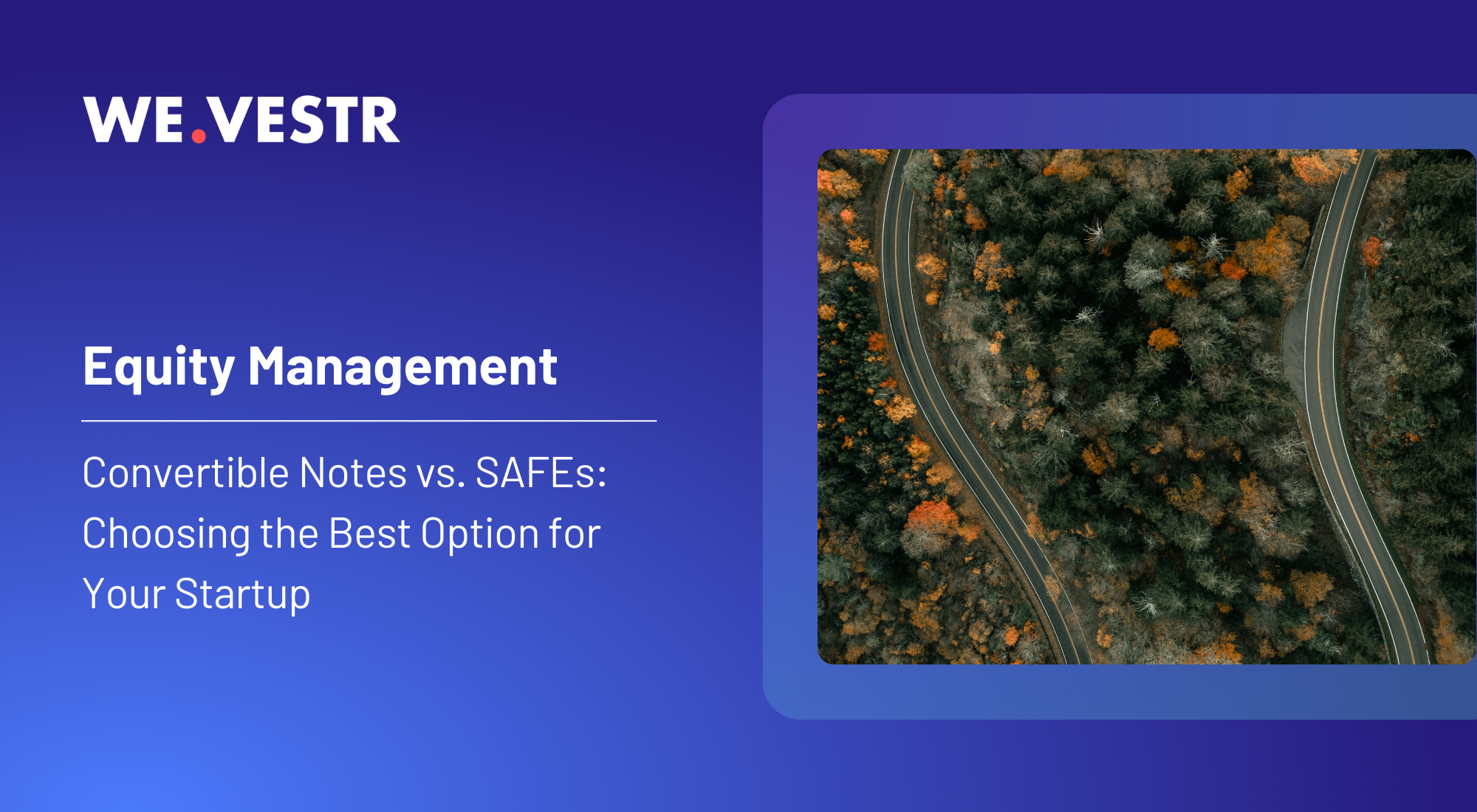Convertible Notes vs. SAFEs: Choosing the Best Option for Your Startup

For startups seeking early-stage financing, two popular options are convertible notes and SAFEs (Simple Agreements for Future Equity). Both offer a way to bring in funds before setting an official company valuation, giving startups the cash they need to grow. But while they serve a similar purpose, convertible notes and SAFEs differ in structure and investor preference, meaning that each option may suit different funding scenarios and types of investors. This guide will help founders understand the differences between these financing tools so they can decide which best aligns with their goals.
Understanding Convertible Notes and SAFEs
Convertible notes and SAFEs help startups raise funds quickly, with terms that allow investors to convert their money into equity at a future round, usually at a discount or with other benefits. Here’s a closer look at how each works:
- Convertible Notes: A convertible note is a form of debt that an investor loans to a company. This “loan” converts into equity at a future round of funding, typically when the company raises a more formal equity round, like Series A. Convertible notes usually have an interest rate and a maturity date, meaning the company is technically borrowing money until it reaches the next financing milestone.
- SAFEs: Created by Y Combinator, SAFEs are an alternative to convertible notes but with a simpler, debt-free structure. Instead of accruing interest or setting a maturity date, SAFEs convert into equity based on a predetermined “trigger event” (usually the next funding round). SAFEs are generally faster to negotiate, with fewer terms to discuss, which makes them appealing to founders looking for a streamlined way to raise funds.
Convertible Notes vs. SAFEs: Key Differences
Debt vs. Non-Debt
- Convertible Notes are technically loans that accrue interest, creating debt on the company’s balance sheet. If the note doesn’t convert (for example, if the company doesn’t raise a qualifying round), founders may need to repay the principal with interest, which can add financial pressure.
- SAFEs, on the other hand, aren’t considered debt. They’re structured to automatically convert to equity without accumulating interest, which reduces financial risk if the company faces delays in raising additional capital.
Interest Rates and Maturity Dates
- Convertible notes typically have interest rates (often 5-8%) and maturity dates, meaning the loan will eventually need to convert or be repaid. This setup appeals to investors who want an added safety net.
- SAFEs don’t accrue interest and don’t have maturity dates. This simplicity often appeals to high-growth startups needing quick cash without repayment deadlines, but some investors may find this lack of structure to be a drawback.
Ease of Use and Speed
- SAFEs are generally quicker to negotiate. The standardized, simplified terms make SAFEs appealing when founders need to raise funds quickly, particularly in pre-seed or seed rounds.
- Convertible Notes tend to require more negotiation over terms like interest rates and maturity, which can slow down the fundraising process. However, some investors prefer these added terms as a way to limit their risk exposure.
Investor and Founder Preferences
- Founder Preference: Founders often favor SAFEs for their speed and simplicity, especially when they’re looking to close a round quickly and minimize legal fees.
- Investor Preference: Investors who prefer more traditional structures may favor convertible notes due to the added protections of maturity dates and interest, which increase the likelihood of return if the company doesn’t reach a trigger event for conversion.
When to Use Each Financing Option
Choosing between a SAFE and a convertible note depends on your company’s situation, growth plans, and investor relationships. Here’s a breakdown of when each option might be ideal:
- SAFEs for Quick, Early-Stage Funding
If you’re a pre-seed or seed-stage company needing fast financing to meet short-term goals (like hiring or product development), a SAFE may be the best option. SAFEs are faster to negotiate and cheaper to finalize, which is often ideal when raising smaller amounts or working with investors who are familiar with the structure. - Convertible Notes for Structure and Flexibility
Convertible notes can work well for companies seeking slightly more structured terms and investors interested in debt-backed securities. If your company is close to reaching the next stage of fundraising or prefers the traditional approach, convertible notes provide a hybrid debt-equity setup that works for both founders and investors. - Considering Market and Investor Dynamics
In markets like the US and UK, SAFEs have become popular, especially among venture-backed, high-growth startups. However, in regions or industries where investors are more risk-averse, convertible notes may provide the predictability and security investors need to feel comfortable.
Key Considerations for Founders
When deciding between SAFEs and convertible notes, founders should consider:
- Company Timeline: If you anticipate raising an official round within 12-18 months, convertible notes may be advantageous, as they offer more structure and accountability. If the timeline is less certain, a SAFE can avoid the complexities of debt.
- Investor Familiarity: Some investors are more comfortable with traditional debt structures. Knowing your investors’ preferences can guide you toward an option they’ll be more likely to support.
- Legal and Administrative Costs: SAFEs are often cheaper to set up and require less legal review, which can be beneficial for early-stage founders with limited budgets.
Convertible notes and SAFEs both have their strengths, and each can play a strategic role in early-stage financing. SAFEs offer simplicity and speed, which many founders value, while convertible notes provide added security and interest accumulation that appeals to more cautious investors. By assessing your company’s needs, growth timeline, and investor preferences, you can choose a financing option that aligns best with your long-term vision.
